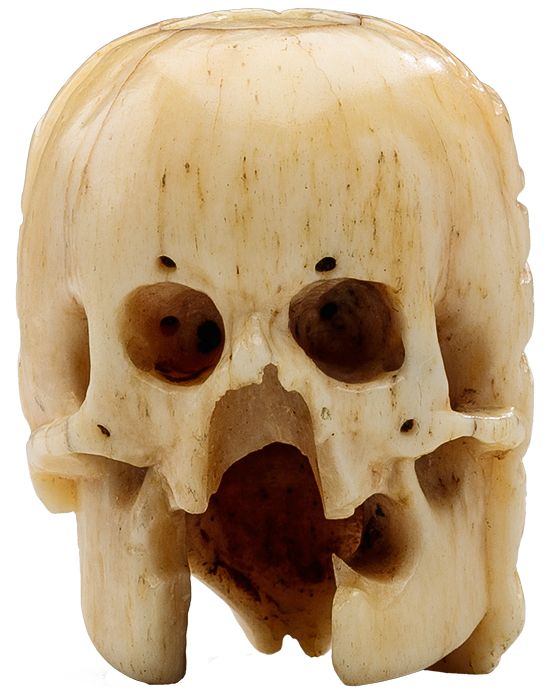


Rosary Bead with Wendekopf
, 16th century


Rosary Bead with Wendekopf
Description
Rosaries often had a larger, more lavish bead at the end of the string, the terminal bead, as well as so-called gauds—large, ornamental beads that prompted the devotee to say the Pater Noster. Because of its size, this bead might be either one of these bead types. Both of these types of larger beads signaled wealth and upper-class status manifested in fine materials and exquisite workmanship, but they also likely attest to their owners’ most deeply held concerns.
This bead diverges from the majority of the beads just described in that it lends itself more readily to devotional use. Three sixteenth-century German beads in Hamburg are similarly two-sided and similarly display the Face of Christ with the Crown of Thorns on one side, and a skull on the opposite side. Each of these objects urges the viewer to turn the bead.
In these two-faced beads, ultimately the owner does not enjoy looking at his own “portrait,” but instead must identify with the skull, an abject reminder of mortality that as the bead turns recalls the suffering of Christ’s incarnation and Passion. In a touching detail and perhaps final reassurance: although Christ does not meet the eyes of the viewer, his lips seem to be parted as if to speak.